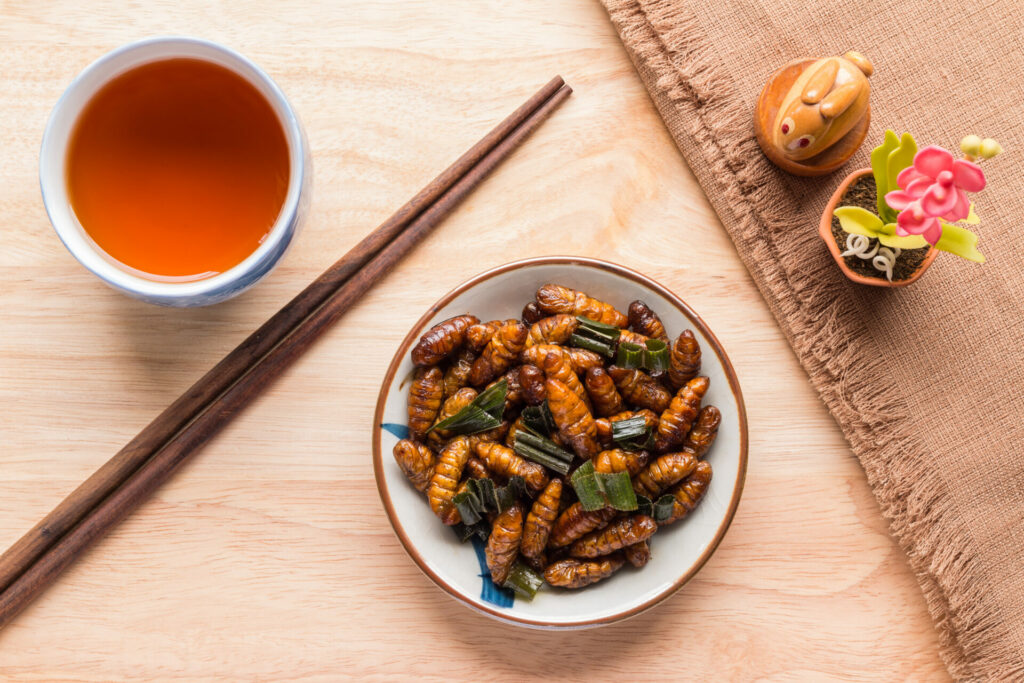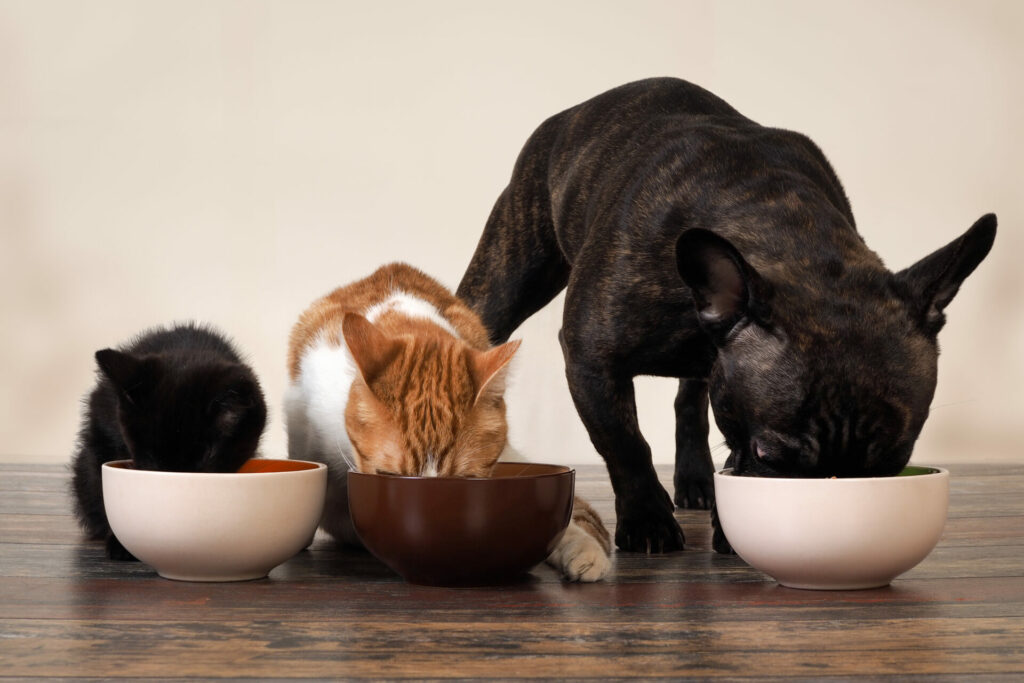Peri-Peri crunchy roasted crickets anyone? For several years the food industry has buzzed with talk of an insect invasion. Start-ups around the world have introduced a range of novel products, anchored on the USP that insects are an environmentally-friendly, nutritious, and surprisingly tasty form of protein.
Consumers in the Far East have always known this. Insects have formed part of the diet there for thousands of years. For western foodies, however, insects are a new and exotic foodstuff, met initially with a degree of squeamishness.
The range of insect-based human consumables has been growing. In addition to the flavoured crickets, UK company Eat Grub also supplies edible mealworms, buffalo worms and grasshoppers. Cricket flour is sold by a range of producers around the world and marketed as a sustainable superfood full of protein minerals, vitamins, essential fatty acids and natural antioxidants.
Schoolchildren in Wales have been fed Bolognese made with bug meat while in Australia 1,000 schools have handed out chips laced with cricket protein.
Livestock farming in its current form is unsustainable. Extensive cattle ranching is the number one culprit of deforestation in virtually every Amazon country, accounting for 80 per cent of lost forests
The environmental arguments for replacing traditional sources of protein with insect protein are sound. Meat consumption is set to rise globally from 300m tonnes annually to 400m tonnes by 2050. Livestock farming in its current form is unsustainable. Extensive cattle ranching is the number one culprit of deforestation in virtually every Amazon country, accounting for 80 per cent of lost forests. It also takes over 13,000 litres of fresh water to produce 1kg of grain-fed beef protein, in contrast it takes eight litres to produce 1kg of cricket protein, plus they can be fed on waste.

Despite these very good reasons why we should swap chicken nuggets for cicadas, uptake has been slow for several reasons. Primarily in the west, there is still a psychological hurdle to overcome before many consumers can consider crunching down on a creepy crawly (understandably as quite frankly some of us at The Ethicalist would rather stick to a bean burger than go all I’m A Celebrity! and start whipping up dishes that resemble Bushtucker trials!). There is also the issue of regulation and standards, which remain piecemeal across different regions. Globally then, the human consumption of insects remains a slow-starter and split along cultural lines.
Future of Animal Feed
But while many diners remain stubbornly resilient to the culinary charms, if there are any, of a bug biryani, the real action is happening in the agricultural sector where insects are fast becoming a more viable and sustainable form of animal feed. In the Middle East, for example, insect protein is now widely being consumed as a feed additive in aquaculture, poultry, and other animals. According to Data Bridge Market Research the Middle East and Africa insect protein market was valued at USD 9,253.00 million in 2021 and is expected to reach USD 60,947.07 million by 2029.
Currently, the manufacture of animal feed is shockingly resource intensive. For example, many animal feeds are made from soya protein and it takes 25kg of soya to rear 1kg of beef. Forests are cut down to provide land for crops which are then shipped around the world by feed manufacturers. The entire production chain is expensive and environmentally damaging.
Alternatively, insects can be produced in situ on farms, fed on waste and provide a more nutritionally rich source of sustenance, particularly for monogastric animals such as chickens. No wonder then that billions of dollars are being invested around the world in insect rearing start-ups.
Insect Investors
Dr Elaine Fitches, Associate Professor in the Department of Biosciences at Durham University in the UK is one of the pioneers of this movement. She headed a three-year £3m European Union project, PROteINSECT, which investigated the viability, safety and technology needed to farm maggots for animal feed. The project had partners in China and Africa, and as result of its findings, the EU approved the use of seven different insect species in agricultural feed in 2016.
‘The benefit in animal feed is that you are rearing the insects on food waste so it’s a circular economy’
Dr Fitches explains that since then, there has been an insect feed boom. ‘There are lots of insect SMEs now in the UK alone,’ she says, ‘so our project helped kickstart the interest. There are billions invested in it now. Some companies are producing insects for animal feed and some for human food, some are trying both. There are bigger profit margins if you produce human food but a bigger market for animal feed. The benefit in animal feed is that you are rearing the insects on food waste so it’s a circular economy. There is a massive protein deficiency in terms of livestock globally, so we need protein for animal feed, and this is a good way of getting a good quality protein out of a so-called waste.’
The star of the agricultural insect firmament is the black soldier fly.
Insect faeces could be an effective fertiliser and the skin that insects naturally shed contains chitin, which primes the immune system of certain plants, thereby theoretically reducing the need for pesticides
Dr Fitches continues: ‘At PROteINSECT we did a lot of work on house flies, but the black soldier fly is the preferred species for animal feed because the adults don’t vector pathogens. The larvae are also ten times the size of a house fly larvae, about 200mgs, and they will eat pretty much anything.’
The protein from these flies is derived at the maggot and larvae stage.

One company, Beta Bugs, based in Scotland, is using genetics to engineer a superior strain of soldier fly which it then licences to producers in much the same way GM seed stocks are licenced to farmers. Its hero product is HiPer-Fly, an ‘elite Black Soldier Fly, bred with a main focus on quantity traits that increase producer yield’.
An Insectrial Revolution
In the UK, 13 organisations within the insect industry have combined to form a consortium, Insectrial Revolution, which has received £10m of funding to help it achieve its aim of establishing the UK as an international centre of excellence for black soldier fly farming. By 2040, it aims to have delivered over 100 sites internationally and created 3300 UK based jobs. It also plans to have generated combined annual revenues of £400m for UK tax paying businesses. It will have delivered savings of 50m tonnes CO2 equivalent, driving the industry closer to the UK Government’s targets for net zero emissions.
Other nations are enthusiastic insect adopters too, including the USA and Canada.
For Prof Fitches, the next challenge is working out what to do with the waste insects create. Insect faeces, or frass, could be an effective fertiliser and the skin that insects naturally shed contains chitin, which primes the immune system of certain plants, thereby theoretically reducing the need for pesticides.
The world’s pet cats and dogs consume 20 per cent of the world’s meat, poultry, and fish, making the pet food industry one of the largest contributors to climate change
‘You’ve only got to look at what happened with fertiliser prices when Russia invaded Ukraine to realise the potential benefits,’ explains Prof Fitches. ‘If we can understand this material, it could go a long way to reducing the negative impact of chemical fertilisers which we don’t have endless sources of. We know that it enhances plant growth because it contains nitrogen and carbon but currently the issues are classification. Is it manure or a soil conditioner?’
The Buzz about Bug Pet Food
Another sector where insects are beginning to make inroads is pet food, which traditionally is manufactured using the waste from slaughterhouses and meat processing plants with added bulking grains, such as corn and wheat. According to British pet food company Percuro – which recently launched in the UAE – the world’s pet cats and dogs consume 20 per cent of the world’s meat, poultry, and fish, making the pet food industry one of the largest contributors to climate change, which is why the company makes its dog food from protein derived from black fly larvae.
They are not alone. Forecasts by Rabobank, a Dutch multinational, predict that the insect pet food market could increase 50-fold by 2030, when it’s thought half a million metric tons will be produced.

Ventzi Naydenova, exclusive distributor of Percuro in the GCC, says: ‘There is a quiet revolution making its way through the animal and human diet and it involves bugs. Insects are a nutritionally superior source of protein which does not require hormones or antibiotics in the farming process, it has the additional benefit of being 98 per cent more sustainable than livestock.’
Although studies on the nutritional composition of insects for pets is still limited, the data that is available is very positive. Insect meal is typically very rich in protein and amino acids for both cats and dogs, often in line with those provided by fish and poultry meal. However, owners are advised to start with a week-long transition, starting with a ratio of 75 per cent old food to 25 per cent new food when making the switch.
Despite the promise and the hype, there are still hurdles to overcome. Current legislation in many countries limits the foodstuffs that can be fed to insects destined for the food chain, largely due to cautions resulting from the mad cow disease scandal. In Europe, for example, it is against the rules to feed waste products containing animal protein to other livestock (and insects are classed as livestock).
‘Insects are not going to replace the 400m tonnes of meat humans will be consuming by 2050. The simplest way to save the planet is to stop eating meat. In this respect insect farming will be nothing more than one of these things that makes us feel better’
There is, however, a project looking at the safety of using non-permitted waste, such as food waste or poultry manure, to rear insects for feed. If it is deemed safe, and if regulations allow frass to be used as fertiliser, poultry farmers will be able to create circular production systems in which all constituent parts are used.
Dr Howard Bell, a former UK government research entomologist who now runs Highfield Biological Consulting advising organisations on insect rearing, believes the real gains will be made not in human consumption, but in incorporating insects into chicken and pig farms.
‘The mainstream press has been awash with articles about how insects might save the world. No, they won’t,’ he says. ‘Insects are not going to replace the 400m tonnes of meat humans will be consuming by 2050. The simplest way to save the planet is to stop eating meat. In this respect insect farming will be nothing more than one of these things that makes us feel better.
‘The best way to do something meaningful is to concentrate on the pathway from waste material to maggots to chickens, whittling away at the soya feed industry. That’s the low hanging fruit where this stuff can make an impact. That makes the most sense.’
Ultimately, he predicts that despite all the investment in insect development, the widespread adoption of insects in the global human diet will remain a pipe dream.
‘There will only be a moderate uptake in insects as human food, largely as a novelty or minor ingredient,” he says. “The way to get insects into the human diet is to disguise the insects as a chicken.’















